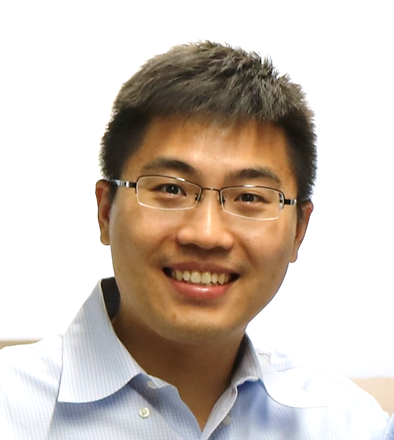
Shu Hu, Assistant Professor of Chemical & Environmental Engineering, Yale University
A New Frontier in Carbon Capture and Conversion: CO2(aq) Molecular Flux Photocatalysis in Flowing Seawater
Carbon capture, utilization, and storage (CCUS) are critical for managing anthropogenic carbon dioxide (CO2) emissions. Great strides have been made in electrification so far, but there are a handful of scenarios that still require hydrocarbon fuels and chemicals, such as aviation, long-haul trucking, and marine shipping. On the one hand, atmospheric CO2 is only 420 ppm, making DAC energy-intensive. On the other hand, atmospheric CO2 exchanges with the ocean surface constantly, and the concentration of dissolved inorganic carbon (DIC) in seawater is approximately 140 times higher in carbon molarity than atmospheric CO2. Thus, direct conversion of the dissolved carbon represents an alternative approach to sustainable chemical and fuels production. However, the HCO3- concentration is still very low (2 mM), and the concentration of dissolved CO2(aq) is near zero: thus, there is insufficient electrochemically active reactant for CO2 reduction (CO2R).
The Hu group introduces a transformative concept of molecular flux catalysis made possible by engineering fluid flow and CO2-sorbent reactions. Conventional photoelectrochemical (PEC) devices require continuous bubbling of pure CO2 gas. We combine non-diffusive transport and light-driven photocatalysis to achieve performance and selectivity comparable to conventional PEC CO2 devices but using a 1000-times lower dissolved carbon concentration and without continuous CO2 purging. I will first elucidate the coupled light absorption, charge separation, and catalysis processes, needed to understand for photocatalysis to achieve >85% quantum efficiency. Then, I will describe the design, realization, and modeling of 3D-printed reactors for unbiased PEC CO2 capture and in-situ conversion in flowing seawater. We achieved a one-step conversion of dissolved carbon to H2 and CO gases, at record solar-to-chemical conversion efficiency. We took a system approach to achieve high-rate CO2(aq) molecular flux catalysis, by, e.g., combining reaction engineering with light-driven conversion at room temperature.
Bio:
Shu Hu received his Ph.D. (2011) from Stanford University, advised by Paul McIntyre in Materials Science and Engineering and Chris Chidsey in Chemistry. Between 2012 and 2015, he did postdoctoral work in the Department of Chemistry with Professor Nathan S. Lewis at California Institute of Technology, where he discovered coating-stabilized photochemical interfaces.
Starting an independent career at Yale, Prof. Hu’s lab is focused on light-driven sustainable chemical and materials synthesis, using small molecules like water, oxygen from the air, dissolved carbon such as carbonates, and methane. Hu is known for functional coatings that stabilize semiconductor-electrolyte interfaces, and a holistic understanding of photocatalysis processes at semiconductor-liquid interfaces in a reactor environment.
To recognize these contributions, he received dozens of Awards & Honors with a few selected: the ACS ENFL Emerging Researcher Award (2024), MRS Emerging Researcher Award (2023), DOE Early Career Award (2021), Global Chinese Chemical Engineer Award (2022), and Scialog Fellow, Negative Emissions Science (2020).
Full bio:
List of Awards & Honors, for example, the ACS ENFL Emerging Researcher Award (2024), MRS Emerging Researcher Award (2023), Brown & Williamson Chemistry Lectureship (2022), DOE Early Career Award (2021), Fellow of the International Association of Advanced Materials (2021) and Scialog Fellow, Negative Emissions Science (2020). Future Chemical Engineering Scholar Award, Global Academy of Chinese Chemical Engineers 2022; Young Innovator Award of Nano Research 2022; ECS, Energy Technology Young Investigator Award 2019; Schottky Seminar, Technical University of Munich 2018; Journal of Materials Chemistry Emerging Investigator Award 2017; Ross N. Tucker Award, the Minerals, Metals & Materials Society.